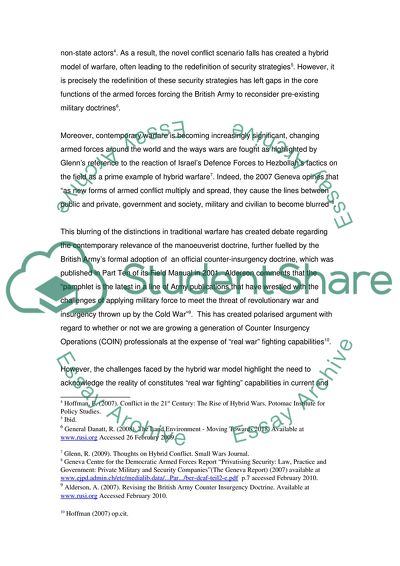Cite this document
(What Is the Hybrid Warfare and What Challenges Does It Present Article, n.d.)
What Is the Hybrid Warfare and What Challenges Does It Present Article. https://studentshare.org/military/1733696-the-term-hybrid-warfare-is-increasingly-used-to-describe-current-and-future-conflict-what-is-it-and-what-challenges-does-it-present
What Is the Hybrid Warfare and What Challenges Does It Present Article. https://studentshare.org/military/1733696-the-term-hybrid-warfare-is-increasingly-used-to-describe-current-and-future-conflict-what-is-it-and-what-challenges-does-it-present
(What Is the Hybrid Warfare and What Challenges Does It Present Article)
What Is the Hybrid Warfare and What Challenges Does It Present Article. https://studentshare.org/military/1733696-the-term-hybrid-warfare-is-increasingly-used-to-describe-current-and-future-conflict-what-is-it-and-what-challenges-does-it-present.
What Is the Hybrid Warfare and What Challenges Does It Present Article. https://studentshare.org/military/1733696-the-term-hybrid-warfare-is-increasingly-used-to-describe-current-and-future-conflict-what-is-it-and-what-challenges-does-it-present.
“What Is the Hybrid Warfare and What Challenges Does It Present Article”. https://studentshare.org/military/1733696-the-term-hybrid-warfare-is-increasingly-used-to-describe-current-and-future-conflict-what-is-it-and-what-challenges-does-it-present.


